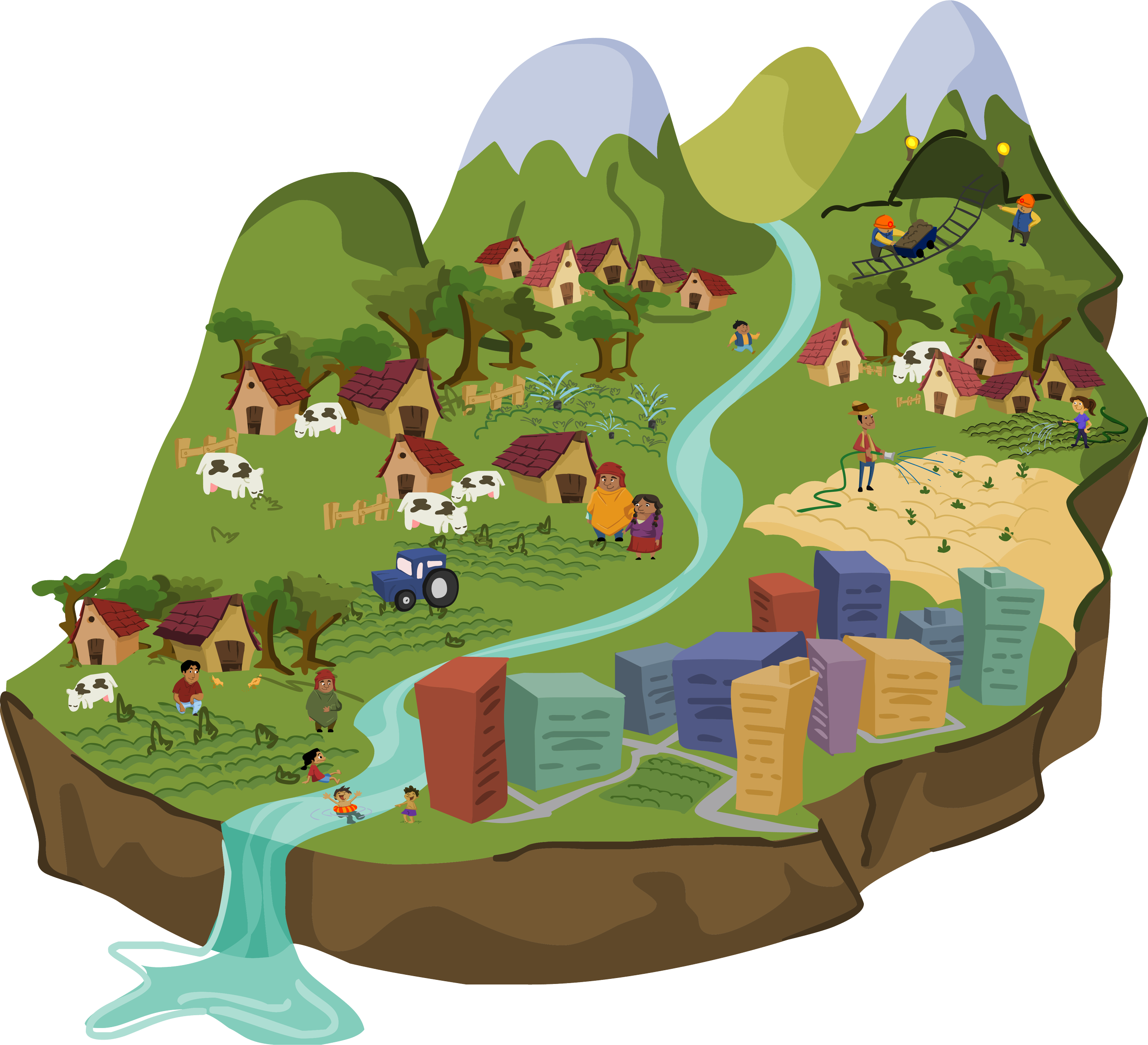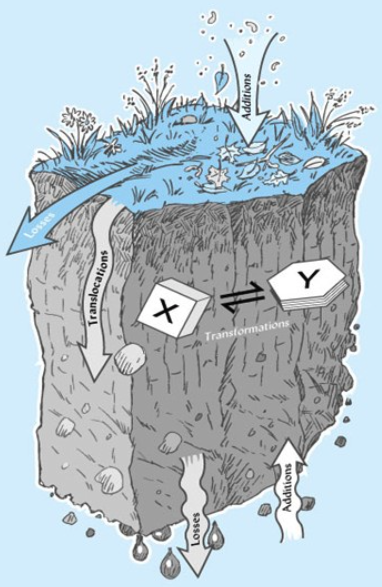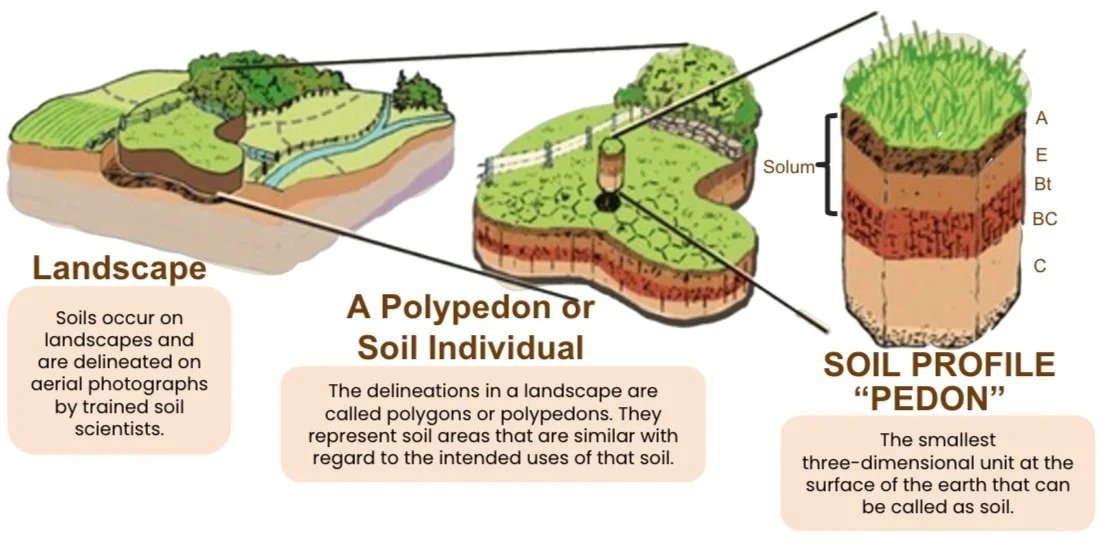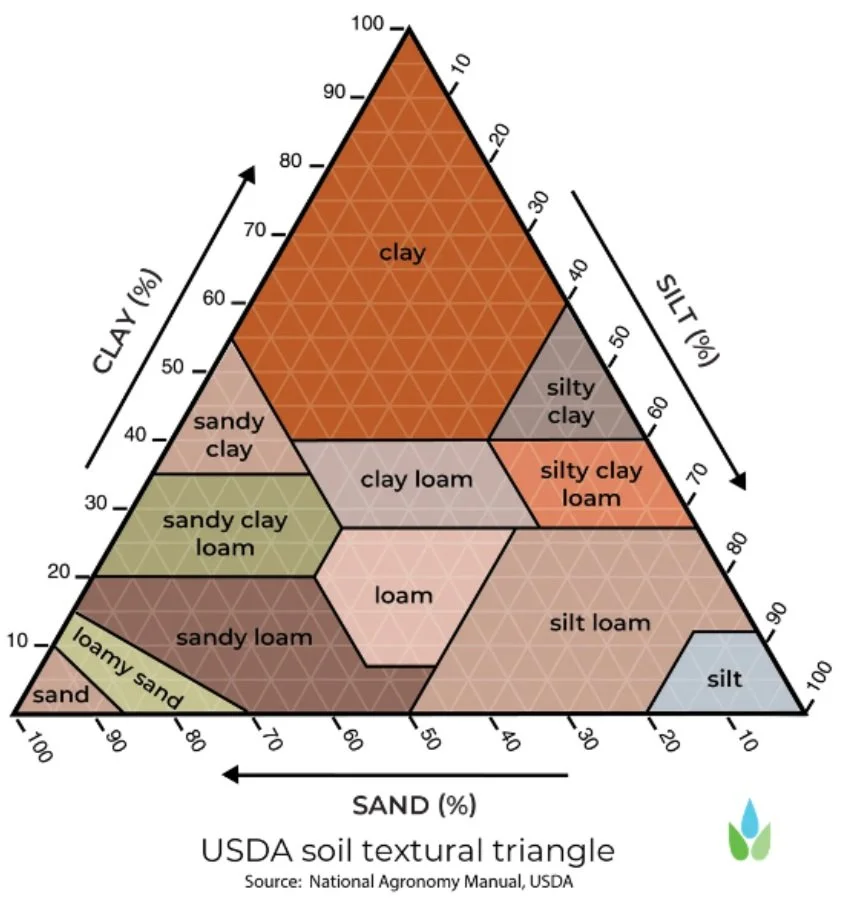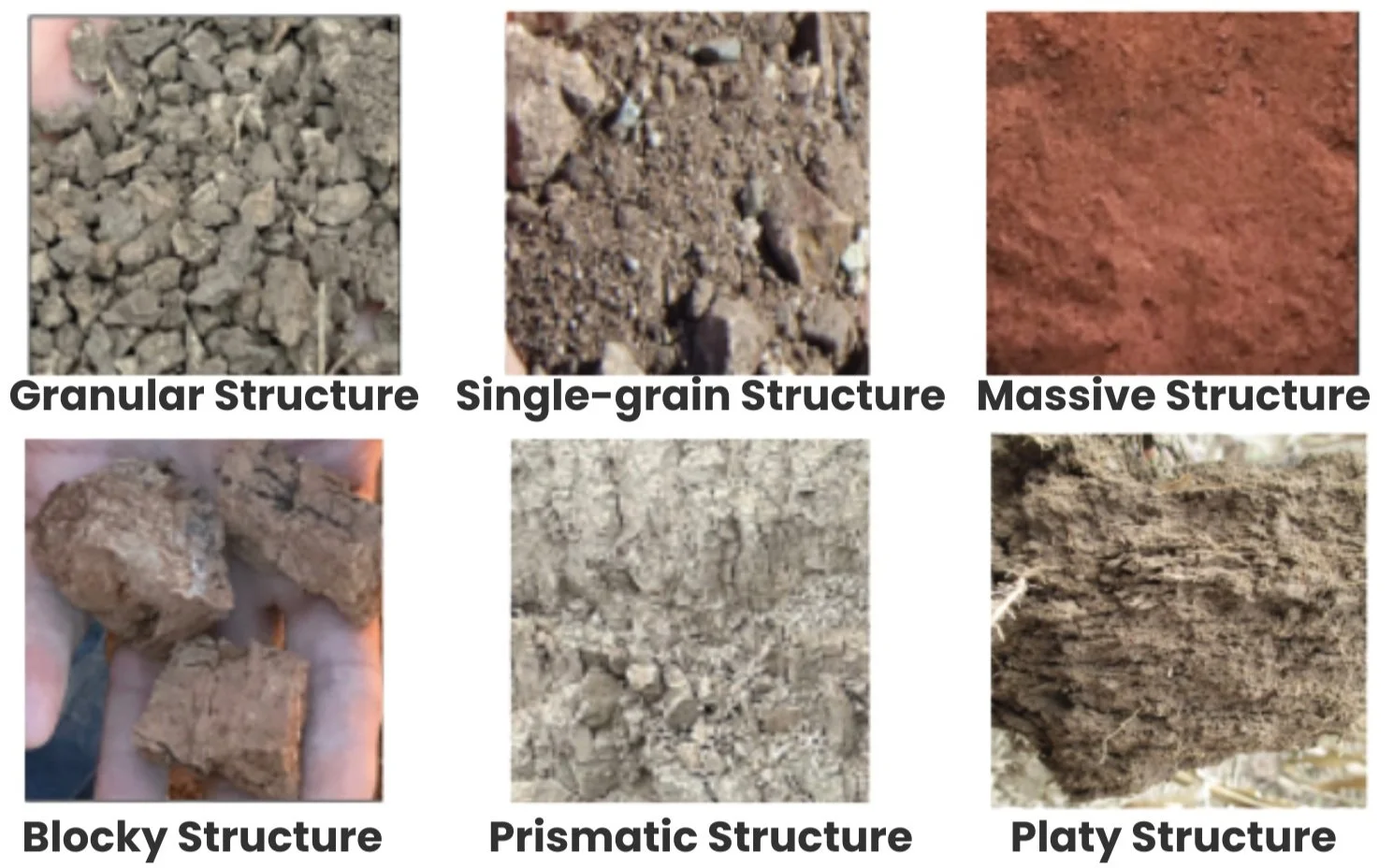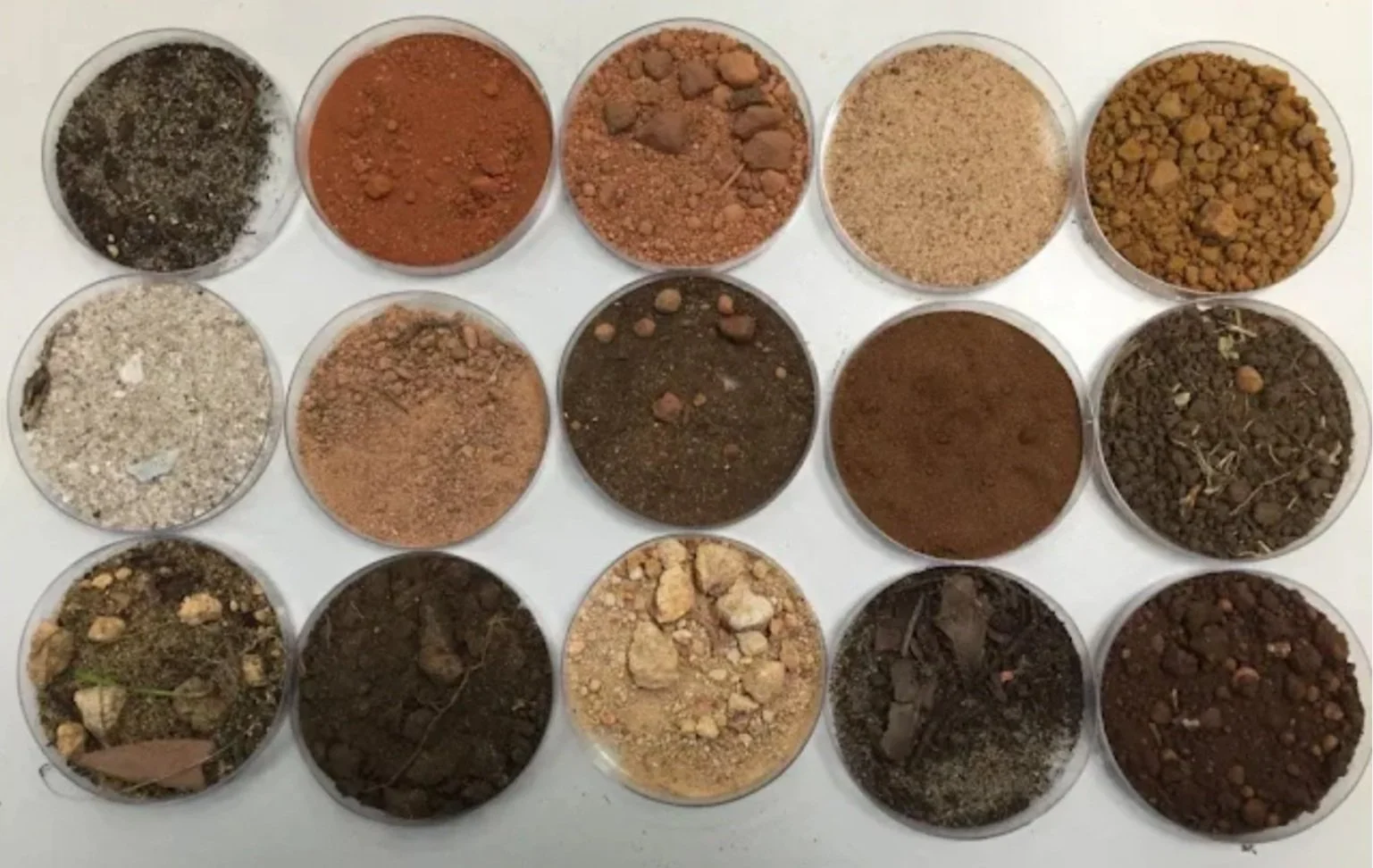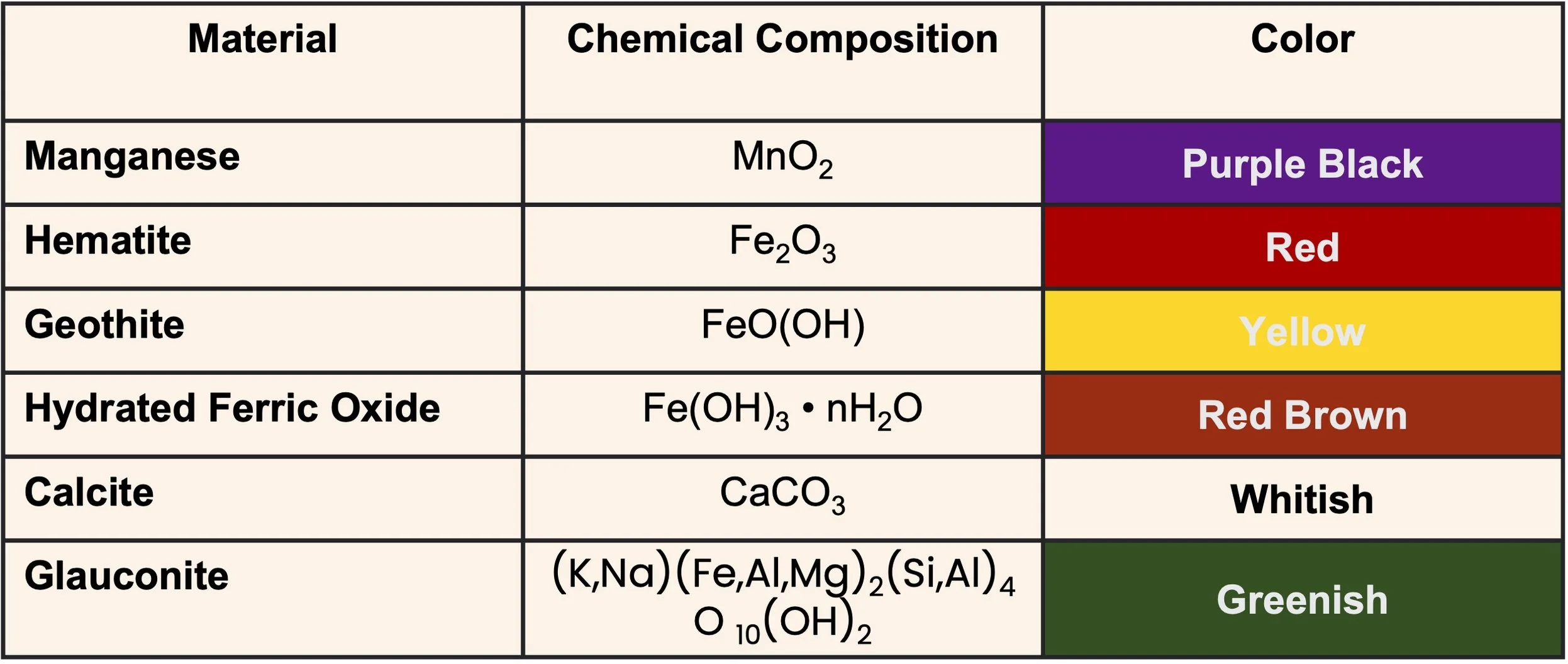SOIL SCIENCE BASICS
Why Study Soil?
Much of our life’s activities and pursuits are related to and influenced by the behavior of the soil around our houses, roads, septic and sewage disposal systems, airports, parks, farms, forests, schools, and shopping centers.
What is Soil?
There are several definitions of soil depending on the discipline providing the definition:
-
loose surface of the earth as distinguished from solid bedrock. (Support of plant life not required)
-
material which nourishes and supports growing plants. (Includes rocks, water, snow, and even air – all of which are capable of supporting plant life)
-
mixture of mineral matter, organic matter, water and air. (Example: Loam soil = 45% mineral matter, 5% organic matter, 25% water, and 25% air).
-
collection of natural bodies of the earth’s surface, in places modified or even made by man or earthy materials, containing living matter and supporting or capable of supporting plants out-of-doors.
-
collection of natural bodies occupying portions of the earth’s surface that support plants and that have properties due to the integrated effect of climate and living matter, acting upon parent material, as conditioned by relief, over periods of time.
Soil Forming Processes
Translocation:
Horizontal or vertical movement of materials.
Transformation:
Modification and/or destruction of existing soil components.
Addition:
Input of materials to the developing soil profiles from outside sources.
Losses:
e.g. evaporation, erosion, decomposition, leaching
Soil Profile
A soil is a three-dimensional natural body in the same sense that a hill, valley, or mountain has three dimensions.
Composition of Soil
What are the Physical Properties of Soils?
Soil Texture
Soil Texture is determined by the relative proportions of sand, silt, and clay in the soil.
A diagram called the soil texture triangle is used to identify soil texture based upon the percentages of sand, silt, and clay in a soil sample.
Soil Structures
Structure refers to the arrangement of soil particles. Soils made up of practically all sand or all silt do not show any appreciable structural arrangement because of a lack of the binding properties provided by clay. A well-developed structure usually indicates the presence of clay.
Soil Color
Color of soil is an important feature in recognizing different soil types, but color is also an indicator of certain physical and chemical characteristics.
Color in soils is due primarily to two factors, humus content and the chemical nature of the iron compounds present in the soil. Humus has a dark brown, almost black, color. A very high content of humus may mask the color of the mineral matter to such an extent that the soil appears almost black regardless if the color status of the iron compounds.
Soil Color & Chemical Composition
There are various degrees of hydration, and the color varies between red and yellow.
It is important to note that the yellow iron is in oxidized form as well as hydrated. This means that a supply of oxygen must be associated with moist conditions to cause yellow colors to form.
Too much water and an absence of oxygen cause anaerobic microorganisms to reduce the ferric iron to ferrous form, and a gray color would be the result.
The red color is associated with good aeration, and a generally lower amount of water is present than is found in yellow materials.
Soil colors are not limited to dark brown or black with gray, red, or yellow or their intermediates. There are some soils with various other shades, generally as a result of other minerals present in the parent materials.
